May 20, 2025 | 02:04 GMT +7
May 20, 2025 | 02:04 GMT +7
Hotline: 0913.378.918
May 20, 2025 | 02:04 GMT +7
Hotline: 0913.378.918
On April 1, the Ministry of Agriculture and Rural Development, in collaboration with Quang Ninh province, organized the Conference on Sustainable Development of Marine Farming - Perspectives from Quang Ninh. During this event, Dr Nguyen Chu Hoi, a Member of the 15th National Assembly and Permanent Vice Chairman of the Vietnam Fisheries Association, provided insights into the current state of marine farming.
According to Mr. Nguyen Chu Hoi, marine aquaculture in our country holds numerous advantages. We have comprehensive guidelines and policies from the Party and State, coupled with an immensely diverse potential and various needs and objectives for marine farming. Marine farming has emerged as a national strategic priority. Vietnam needs mechanisms to allow provinces to proceed with implementing marine farming plans at lower levels even before the approval of the National Marine Spatial Plan.

Dr. Nguyen Chu Hoi emphasized that marine farming represents a long-term strategic direction for the country. Photo: Hong Tham.
Recently, some coastal localities have had their plans approved, signaling promising prospects for marine farming. Well-developed marine aquaculture could alleviate pressure on aquatic resources, particularly in areas where fishing and aquaculture have already reached critical levels and necessitate long-term alternatives.
However, National Assembly Member Nguyen Chu Hoi highlighted significant challenges facing marine farming.
Firstly, the high density of aquaculture in coastal estuarine areas exerts pressure on the environment. Additionally, conflicts of interest with other industries and professions are prevalent in these farming areas.
Secondly, there are still numerous limitations and inadequacies concerning food and breeds for marine farming, which sometimes need more environmental friendliness.
Thirdly, there are still significant concerns regarding supply chain issues. Questions such as where to sell, determining the appropriate volume, and managing the size of goods pose challenges that must be addressed. Forecasts often need to be more accurate, leading to confusion among coastal localities. The real issue lies in the abundance of potential, but the determination of sufficient production depends on the output.
Fourthly, challenges persist in mechanisms, policies, and the allocation of rights for managing and utilizing water surfaces for marine farming. Regulatory issues and cumbersome procedures hinder businesses and farmers from promptly obtaining the necessary licenses when required.
The most prominent "bottleneck" is the planning aspect. Although the Law on Marine and Island Resources and Environment permits provinces to conduct planning within 6 nautical miles, the implementation of such planning currently clashes with other industries and occupations. Furthermore, it must align with the approved National Marine Spatial Plan.
Despite recent developments where central coastal provinces/cities have initiated plans, some even approved and announced by the Prime Minister, detailed planning for the marine farming sector still needs to be addressed. Some provinces take between 6 months to 1 year to complete this process, with no locality resolving it within 1 month. Issues related to national defense and security, spatial conflicts in the use of the same sea area among different users necessitate negotiations and adjustments in planning.
National Assembly delegate Nguyen Chu Hoi stated: "The project to develop marine aquaculture until 2030, with a vision to 2045, has been approved by the Government for 4 years now. However, the actual expansion of the marine aquaculture area, following the project's spirit, remains modest. It is still in its infancy."
The policy of developing marine farming has been underscored in Resolution No. 36-NQ/TW dated October 22, 2018, from the Eighth Conference of the Party Central Committee (term XII) on the Strategy for Sustainable Economic Development of Vietnam's Sea until 2030, with a vision toward 2045. This resolution views marine farming as a new economic sector promoting sustainable and responsible fisheries development. Despite the numerous difficulties and challenges, it presents a significant opportunity.
"In the immediate future, marine farming must identify specific and fundamental solutions to align with the objectives of the Party and State, the demands of localities, as well as the needs of businesses, cooperatives, and aquaculture farmers," emphasized National Assembly Delegate Nguyen Chu Hoi.
Mr. Nguyen Chu Hoi further explained that the licensing issue for exploiting and utilizing marine areas falls under the authority of the Ministry of Natural Resources and Environment, not the Ministry of Agriculture and Rural Development. However, the timeline for marine usage falls between the 2017 Fisheries Law and various decrees associated with Decree No. 11/2021/ND-CP issued by the Government, regulating the allocation of specific marine areas to organizations. Different organizations and individuals exploiting and utilizing marine resources have varying lease periods. Moreover, there are significant issues with the granting procedures, with each party having its own approach. Mr. Hoi hoped these issues would be rectified and standardized to facilitate favorable conditions for businesses and seafarers. This goal requires stakeholders to find common ground and demonstrate determination to address these issues.
According to National Assembly Delegate Nguyen Chu Hoi, the National Assembly has devised general solutions, entrusting the Government with specific mechanisms. This involves permitting localities to simultaneously implement plans at lower levels, including the marine aquaculture sector, while the National Marine Spatial Plan awaits approval. This strategic approach ensures that regulations outlined in the 2017 Planning Law do not serve as bottlenecks impeding localities' progress in marine aquaculture implementation. This macro-level policy is of paramount importance.
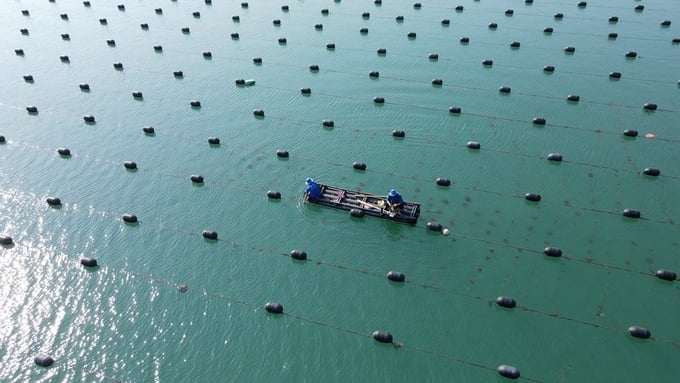
Localities should take proactive steps to implement provincial-level planning for the marine sector by utilizing "Marine Functional Zoning." Photo: Duy Hoc.
We emphasize the importance of planning. According to the 2017 Planning Law, all other marine planning initiatives must align with the National Marine Spatial Plan. However, the National Marine Spatial Plan is still undergoing appraisal and has yet to be approved. We hope it will be approved during the 2024 National Assembly Session.
To address and overcome difficulties and challenges, effectively promote marine farming in line with the policies of the Party and State, and successfully implement the Government-approved Project for the Development of Marine Aquaculture until 2030, with a vision toward 2045, Dr. Nguyen Chu Hoi emphasized that localities should proactively undertake provincial-level planning for the marine segment. This can be achieved by applying the tool of "Marine Functional Zoning" (MFZ) to allocate specific sea areas for different purposes.
Every coastal locality should have marine spatial orientations for development and conservation. Based on these orientations, they should conduct marine functional zoning as mentioned above. This should be implemented in parallel while awaiting the approval of the National Marine Spatial Plan because, according to the 2017 Planning Law, local-level planning for marine space is no longer mandatory.
As mentioned earlier, the National Assembly has a specific policy and allows the Government to proceed accordingly. However, as this is the first time implementing such a complex plan, numerous challenges remain. Thus, as outlined above, the only way forward is to apply it flexibly.
National Assembly delegate Nguyen Chu Hoi stated: "Recently, some localities have taken proactive steps in applying marine functional zoning, albeit on a modest scale. This will allow for timely adjustments when the National Marine Spatial Plan is finalized. Implementing such measures, particularly in offshore areas, will attract investment and meet the readiness needs of businesses."
National Assembly Member Nguyen Chu Hoi's second solution focuses on guidelines and policies. He suggests allowing restructuring to reorganize the utilization of space in coastal estuaries and sea areas where significant conflicts of interest between aquaculture and other industries and occupations exist.
Specifically, for coastal estuaries, wherever feasible, efforts should be made to minimize conflicts by implementing a "dual use" strategy, combining both tourism and aquaculture activities. In the case of offshore aquaculture (within 6 nautical miles), it is imperative to ensure strict adherence to the development of high-tech, disease-free, and environmentally friendly aquaculture practices.
Thirdly, as previously mentioned, there is a pressing need to establish marine functional zoning to delineate zones for marine farming in coastal estuaries and waters. This zoning should follow a phased approach, initially covering up to 3 nautical miles, with the potential for extension to 6 nautical miles if conditions permit. Consequently, it is necessary to encourage and prioritize investment from large, high-tech enterprises, as offshore investment carries inherent risks. With adequate potential in terms of capital, technology, and human resources, successful implementation becomes easier.
Fourthly, it is essential to ensure the availability of appropriate breeds and clean, sufficient food supplies to prevent excess that could pollute the farming environment. These resources should be suitable for each type of farming and the scale of the farming area or cage.
Fifthly, farming species must be diversified. Apart from traditional species like shrimp and fish, new species such as seaweed, particularly those with medicinal properties, must be promoted to potentially cultivate a new marine economic sector—the marine medicinal industry. Attention should be given to preserving seaweed beds, seagrass, mangrove plants, and coral reefs to maintain their carbon capture function, contributing to climate change mitigation.
"We have a thriving pharmaceutical industry but lack marine medicinal herbs. With its extensive coastline, Vietnam possesses immense potential for marine medicinal herbs. The tropical climate here is conducive to developing these resources for producing nutritious food, reducing reliance on imports, fostering processing capabilities, and adding value. This approach also helps conserve natural resources," Mr. Nguyen Chu Hoi emphasized.
The final solution entails establishing a stable production and supply chain to prevent disruptions that could hinder economic sustainability or contradict our objectives.

Seaweed, a new farming object. Photo: Duy Hoc.
According to Dr. Nguyen Chu Hoi, only some locations can seamlessly integrate aquaculture and tourism, but it should be pursued wherever feasible. However, for coastal tourism to thrive, cleanliness is paramount. No one wishes to visit and experience unsanitary, polluted areas. Even if visitors spend money, they are unlikely to return. Secondly, such destinations must serve as prominent "check-in" points for tourists. Thirdly, engaging narratives and creative, appealing programs should ideally be associated with recreational fishing experiences.
Dr. Nguyen Chu Hoi recounted an experience from 2000 when he visited Nantes, a city at the mouth of the Loire River in France. He witnessed aquaculture practices where fish were raised in cages buoyed by rafts made of durable, colorful plastic. Visitors could observe commercially farmed fish in the treatment system of the farming environment. At the end of the row of cages, a restaurant was positioned over the water, with fish being raised directly underneath. Adjacent to the restaurant was a designated "check-in" point where visitors could take photos. Many were willing to pay 10 euros to purchase a box of food, stand within the cage, feed the fish, witness them jumping, and capture artistic photos amidst the splashing water.
"This anecdote exemplifies the importance of creative and engaging programs in the development of aquaculture and tourism. By doing so, we can mitigate conflicts, foster multiple benefits, and achieve win-win outcomes for all parties involved," shared Dr. Nguyen Chu Hoi.
On April 1, the Ministry of Agriculture and Rural Development, in collaboration with Quang Ninh province, organized the "Conference on Sustainable Development of Marine Farming - View from Quang Ninh." The conference was chaired by Minister of Agriculture and Rural Development Le Minh Hoan and Secretary of the Provincial Party Committee, and Chairman of the People's Council of Quang Ninh province Nguyen Xuan Ky. The conference is anticipated to draw approximately 400 - 450 domestic and international delegates.
Vietnam Agriculture Newspaper will live-stream the event across multimedia platforms. Participants can also join via Zoom with the following details: ID: 939 8269 4473, Password: 202404.
Translated by Quynh Chi
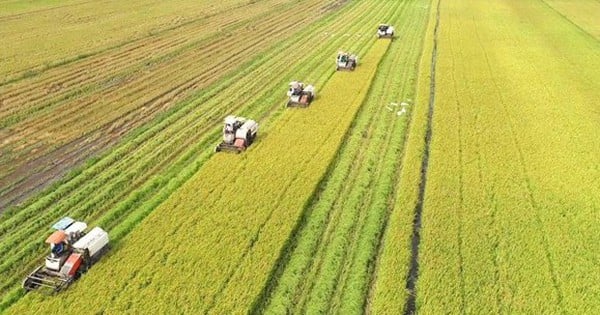
(VAN) This was the assessment shared by experts at the workshop titled 'Assessing the Role and Potential of Low-Emission Rice Production Systems in Vietnam,' held on the morning of May 19.

(VAN) Cai Rong Port is the fisheries control center of Quang Ninh, helping to monitor fishing vessels, combat IUU fishing, and remove the EC's 'yellow card'.
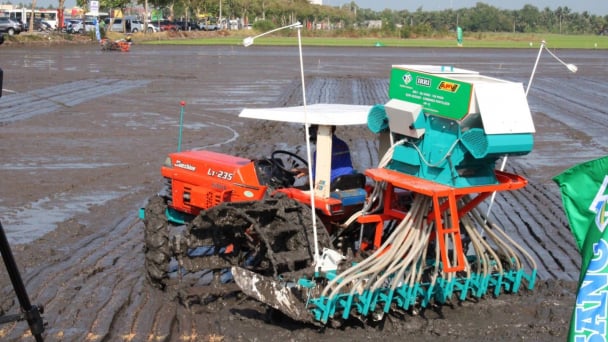
(VAN) The German Agricultural Society (DLG) explores the possibility of establishing a mechanization service center in Vietnam’s Mekong Delta to support farmers in accessing and utilizing advanced machinery.
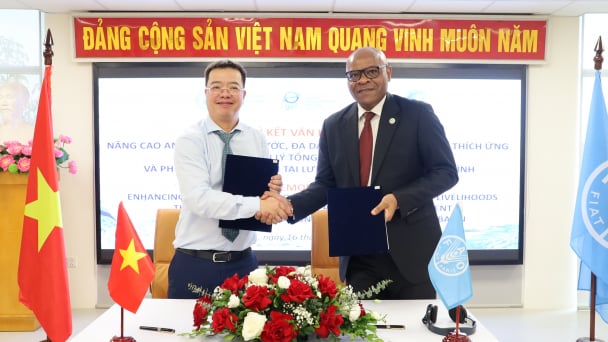
(VAN) On May 16, the Department of Water Resources Management, in collaboration with the Food and Agriculture Organization of the United Nations (FAO), held a signing ceremony for the GEF-8 project document.
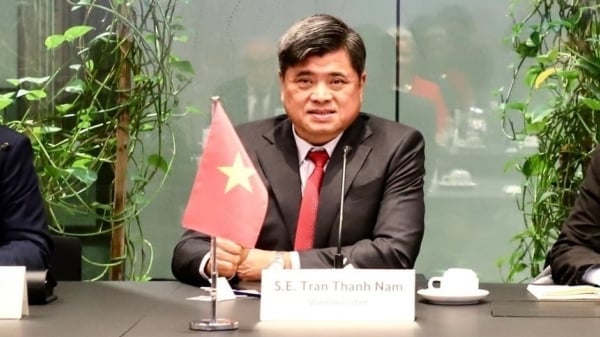
(VAN) Food safety, mechanization, vocational training, and market opening are key areas of cooperation expected between the Vietnamese Government and the Federal Republic of Germany.
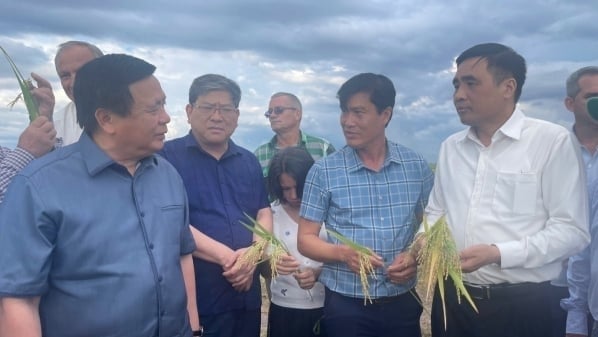
(VAN) Deputy Minister Nguyen Quoc Tri also expressed his hope that Cuba will soon overcome its current challenges, attain food security, and further expand cooperation with Vietnam.

(VAN) The project contributes to enhancing the resilience of communities vulnerable to the impacts of climate change, with a primary focus on local women.